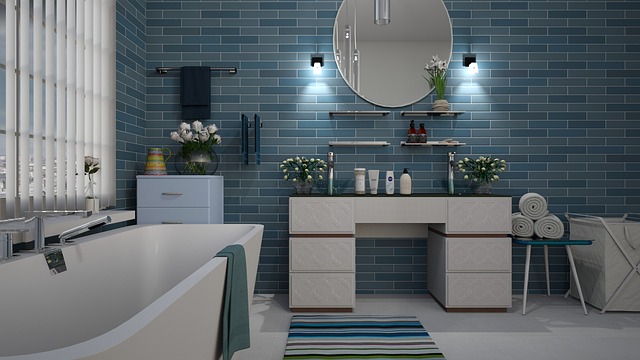In today's digital era, consumers demand intuitive voice-activated bathroom features that integrate seamlessly with existing smart home systems. These technologies, such as smart mirrors and shower systems, allow users to control lighting, temperature, and music with simple voice commands, revolutionizing daily routines. Designing these features requires focus on compatibility across devices and operating systems, while user interface (UI) and user experience (UX) design ensure a coherent interaction. Thorough testing and continuous iteration are crucial for creating universally accessible solutions that cater to diverse user needs, including those with disabilities.
In today’s tech-driven world, voice-activated devices are transforming everyday experiences—including the bathroom. As smart bathroom technology gains traction, ensuring compatibility across diverse devices is paramount for a seamless user experience. This article explores key aspects from understanding user expectations of voice-activated features to designing interfaces that cater to universal accessibility. We delve into the technical considerations, current landscape, and testing methods essential for creating truly integrated smart bathroom solutions.
Understanding User Expectations for Voice-Activated Devices
In today’s digital era, users have come to expect seamless and intuitive interactions with technology in every aspect of their lives, including their homes. With the rise in popularity of voice-activated devices, there is a growing demand for voice-activated bathroom features that offer a consistent and easy-to-use experience across various platforms and devices. Consumers no longer want to navigate complex menus or struggle with clunky interfaces; instead, they crave simple voice commands to control their bathroom environment.
This shift in user expectations requires developers and manufacturers to prioritize compatibility and integration when designing smart bathroom solutions. Ensuring that voice-activated bathroom features work seamlessly across different devices and operating systems is crucial for fostering a positive user experience. Whether it’s adjusting lighting, controlling temperature, or playing soothing music, the goal is to make these tasks effortless and accessible through natural language interactions.
The Current Landscape of Smart Bathroom Technology
The current landscape of smart bathroom technology is a testament to the ever-evolving nature of our homes, with an increasing array of devices designed to enhance daily routines. Voice-activated bathroom features, such as smart mirrors and shower systems, are at the forefront of this revolution. These technologies offer more than just convenience; they promise a personalized and automated experience tailored to individual preferences.
For instance, voice commands can adjust lighting, temperature, and music in the bathroom, creating an ambiance that suits various activities—from waking up to unwinding after a long day. Smart mirrors equipped with AI assistants can display relevant information, offer weather updates, and even provide skincare or makeup recommendations based on user needs. This integration of voice-activated features aims to make everyday tasks more efficient and enjoyable, setting the stage for a truly seamless smart home experience.
Technical Considerations for Compatibility: Hardware and Software
When designing and implementing voice-activated bathroom features, a key aspect is ensuring compatibility across diverse devices for a seamless user experience. This involves careful technical considerations regarding hardware and software integration.
On the hardware front, it’s essential to account for varying specifications such as processor speeds, memory capacity, and connectivity options. For instance, older models might lack sufficient processing power or support for advanced voice recognition algorithms. Software compatibility is equally vital; ensuring that the voice-activation system operates smoothly across different operating systems and firmware versions. This includes addressing issues like compatibility with smart home hubs, voice assistant platforms, and device-specific APIs to guarantee consistent performance regardless of the user’s setup.
Designing for Seamless Integration: User Interface and Experience
When designing for seamless integration, especially with innovative features like voice-activated bathroom fixtures, user interface and experience are paramount. The goal is to create an intuitive and consistent interaction that adapts seamlessly across different devices. This requires a deep understanding of users’ expectations and behaviors, regardless of whether they’re interacting with a smartphone app controlling the shower temperature or using voice commands to activate the faucet.
A well-designed UI/UX ensures that the overall experience remains coherent, even as the specific input methods change. For instance, voice activation should feel no different from tapping a button on a touchscreen, both in terms of functionality and user satisfaction. This seamless integration not only enhances convenience but also builds trust in the technology, encouraging users to adopt and fully utilize advanced features like voice-activated bathroom solutions.
Testing and Iterating for Universally Accessible Solutions
Testing and iterating are vital components in developing universally accessible solutions for all users, including those with diverse abilities and preferences. When designing voice-activated bathroom features, it’s crucial to conduct thorough testing across various devices and platforms to ensure compatibility. This process involves gathering feedback from a diverse range of users, simulating different scenarios, and adapting the technology accordingly.
By continuously iterating based on user feedback, developers can refine the voice command recognition, improve accessibility options, and enhance overall usability. This ensures that the features cater to individuals with visual impairments, motor disabilities, or those who prefer alternative interaction methods. Through rigorous testing and iteration, universally accessible voice-activated bathroom solutions can be achieved, providing a seamless experience for all users.
As we navigate the burgeoning landscape of smart bathroom technology, integrating voice-activated features across diverse devices is paramount for a seamless user experience. By addressing technical compatibility challenges through thoughtful hardware and software design, we can ensure these innovations cater to a wide range of users. Iterative testing and an emphasis on universally accessible solutions are essential to meet evolving expectations for voice-activated bathroom features that truly enhance daily routines.
